Comments / Questions (39)
![]() Wendy wrote:
Wendy wrote:
Is there a complete video somewhere for this fish Tale sweater knitting pattern
17.11.2025 - 22:09
![]() Yvonne wrote:
Yvonne wrote:
” när arb mäter 21,5-24,5-28,5 (31,5-34,5-37,5) cm stickas axel så här: Sätt 4 m mitt under ärmen på en tråd. Sätt sedan 8 m i varje sida på tråden på vartannat v 2 ggr. Sedan sätts alla m tillbaka på st och sticka M.1. Maska av efter M.1. Arb mäter ca 26-30-34 (37-40-43) cm.” Jag har stickat ärmen runt på strumpstickor/kort rundsticka. Är det meningen att slutet av ärmen enl ovan stickas fram och tillbaka och inte runt?
11.09.2025 - 19:26DROPS Design answered:
Ja, ärmkullen ska stickas fram och tillbaka. Du kan sticka fram och tillbaka på rundstickan.
23.09.2025 - 19:33
![]() Lone Essom wrote:
Lone Essom wrote:
Jeg forstår ikke jeres beskrivelse af mønster. Hvad mener I med mønster 1, 8 cm af mønster 2??? hvilket skal man starte med og hvor mange cm?
06.05.2025 - 12:39DROPS Design answered:
Hei Lona. Usikker på hvor du ser 1,8 cm. I oppskriften står det at du skal strikke 6-7-7,5 (7,5-8-8,5) cm av mønster M.2. På Ryg- og forstykke i f.eks str. 3/4 år skal du etter vrangborden bytte til rundpinne 5 og strikke glattstrikk til arbeidet måler 17 cm, så skal det strikkes Mønster ryg- og forstk. Mønster ryg- og forstk er forklart øverst i oppskriften = Strikk M.1 (6 omganger), så skal du strikke etter M.2 i 6 cm, strikk M.1 (6 omganger), M.2 i 6 cm, så enda en gang: M.1 (6 omganger), M.2 i 6 cm og avslutt Ryg- og forstykke med M. 1 før det felles av. mvh DROPS Design
12.05.2025 - 09:23
![]() Lulu Kamp wrote:
Lulu Kamp wrote:
Kan denne opskrift ikke fås til voksne mænd ?
18.04.2025 - 15:14
![]() Cécile wrote:
Cécile wrote:
Je ne comprends pas comment procéder pour le haut de la manche. ..comment utiliser le porte-maille? (2mailles de chaque côté, tricoter aller-retour, puis 8 mailles)
10.05.2024 - 15:36DROPS Design answered:
Bonjour Cécile, quand vous avez mis en attente 4 mailles sous la manche (= 2 mailles de chaque côté du milieu sous la manche), continuez en allers et retours et mettez en attente les 8 premières mailles au début des 4 rangs suivants (= 2 x 8 mailles + 1 x 2 mailles en attente de chaque côté). Bon tricot!
10.05.2024 - 16:38
![]() Ida wrote:
Ida wrote:
I am having trouble with these instructions….shape the sleeve cap as follows: put 2 sts on each side of the marker on a holder. Knit the sleeve cap back and forth on the needle placing sts at each edge on a holder every other row as follows: 8 sts 2 times. Then put all sts back on needle and knit Pattern 1.
03.04.2024 - 20:42DROPS Design answered:
Dear Ida, When you knit the upper part of the sleeve, you knit back and forth, and while doing that, at the beginning of each row, you put the number of stitches described on a stitch-holder (after you knitted them). Then you put all the stitches back to the circular needle, and continue with the pattern. I hope this helps. Happy Knitting!
03.04.2024 - 23:20
![]() Linda Mccoy wrote:
Linda Mccoy wrote:
When sewing in the Sleeve s is it done from wrong side or right side?
16.01.2023 - 21:37DROPS Design answered:
Dear Mrs Mccoy, sleeves are generally sewn from right side - see this video. Happy assembly!
17.01.2023 - 10:12
![]() Linda Mccoy wrote:
Linda Mccoy wrote:
Hello and Happy New year. This has got to be the worst pattern to follow. I have been reading patterns 50 yrs. I have never had a pattern that has stumped me like this one. I realise that this has been translated from another language. However maybe someone should rewrite it so people can understand what the pattern is saying. Thank you
04.01.2023 - 19:59
![]() Lisa Hertel wrote:
Lisa Hertel wrote:
Does this cap take place under the arm? i cannot figure this out. I have knitted this portion of the pattern 3 times. the graphic does not show a cap for shoulder it looks straight across. again may i ask what is the purpose of this?
19.12.2022 - 15:43DROPS Design answered:
Dear Mrs Hertel, this portion is the sleeve cap, is you will work short rows (leaving first 2 sts 1 time then 8 sts 2 times unworked on each side of mid under sleeve, ie the first 2+8+8 sts from mid under sleeve and the last 2-8-8 sts towards mid under sleeve (the middle 36 sts under sleeve the sleeve are on a thread, 16 sts on each side of mid under sleeve) - chart is just standard and just don't show this sleeve cap. Hope it can help. Happy knitting!
19.12.2022 - 15:59
![]() Lisa Hertel wrote:
Lisa Hertel wrote:
I followed the directions given to Mrs. Frew. The pattern was askew and the work was done under the arm. If it is a cap, shouldn't it be on the top near the shoulder? I am very confused
18.12.2022 - 19:16DROPS Design answered:
Dear Mrs Hertel, please let us know if the previous answer could help you or if you need more information.
19.12.2022 - 09:40
Fish Tales |
|||||||
|
|
|||||||
Sweater in Alaska
DROPS Children 7-5 |
|||||||
|
Gauge: 17 sts and 22 rows on larger needles in stockinette stitch = 10 x 10 cm Pattern: See charts. One chart equals one repeat of the pattern. The pattern is seen from the right side. WRITTEN INSTRUCTIONS: Pattern 1: * 2 rows stockinette stitch, 2 rows reverse stockinette stitch, 2 rows stockinette stitch * Pattern 2: Row 1: * K 2, P 2 * Row 2: * P 2, K 2 * Row 3: * P 2, K 2 * Row 4: * K 2, P 2 * Repeat these 4 rows. Rib: *knit 2, purl 2 *. Repeat from * - *. Body: Cast on 136-144-152 (168-176-184) sts on smaller circular needles with blue. Join, being careful not to twist the sts. Place a marker at the join and knit 2 rows stockinette stitch and then in rib until the work measures 4-4-4 (5-5-5) cm. Change to larger circular needles and knit in stocking st. When the work measures 17-17-20.5 (22.5-23-24.5) cm, knit in Pattern as follows: Knit Pattern 1 one time (6 rows). Knit 6-7-7.5 (7.5-8-8.5) cm of Pattern 2. Knit Pattern 1 one time (6 rows). Knit 6-7-7.5 (7.5-8-8.5) cm of Pattern 2. Knit Pattern 1 one time (6 rows). At the same time, when the work measures 29-31-34 (35-36-38) cm , divide for front and back and knit each part separately. Front: 68-72-76 (84-88-92) sts. Continue to knit in Pattern as above. When the work measures 41-44-49 (50-52-54) cm , bind off the center 24-24-26 (22-24-24) sts for the neck. Bind off at each neck edge on every other row: 2 sts 1 time, 1 st 1 time. Bind off after finishing the Pattern. The work measures approximately 45-48-53 (55-57-60) cm . Back: 68-72-76 (84-88-92) sts. Continue knitting in Pattern as for front. When the work measures 43-46-51 (53-55-58) cm , bind off the center 26-26-28 (24-26-26) sts for the neck. Bind off 2 sts on each neck edge on the next row. Bind off after finishing the Pattern. The work should measure approximately 45-48-53 (55-57-60) cm . Sleeves: Cast on 30-32-32 (34-34-36) sts with blue on smaller double pointed needles. Join, being careful not to twist the sts. Place a marker at the join and knit 2 rows in stockinette stitch and then rib until the work measures 4-4-5 (5-5-5) cm . Change to larger double pointed needles and knit in stockinette stitch, increasing 4-6-8 (6-8-6) sts evenly distributed over the 1st row. 34-38-40 (40-42-42) sts. At the same time, after the ribbing inc 1 st on each side of the 10-10-12 (14-15-16) times: Size 3/4 years: alternately every 3rd and 4th row. Sizes 5/6 + 7/8 + 9/10 + 11/12 + 13/14 years: alternately every 4th and 5th row. = 54-58-64 (68-72-74) sts. When the work measures 15-18-21.5 (24.5-27-29.5) cm , knit Pattern 1 one time and after that 6-7-7.5 (7.5-8-8.5) cm of Pattern 2. When the work measures 21.5-24.5-28.5 (31.5-34.5-37.5) cm shape the sleeve cap as follows: put 2 sts on each side of the marker on a holder. Knit the sleeve cap back and forth on the needle placing sts at each edge on a holder every other row as follows: 8 sts 2 times. Then put all sts back on needle and knit Pattern 1. Bind off after Pattern 1. The work should measure approximately 26-30-34 (37-40-43) cm . Assembly: Sew shoulder seams. Pick up approx. 72-84 sts with blue around the neck on smaller circular needles and purl 2 rows, then knit 4-4-5 (5-6-6) cm in rib and after that 2 rows of stockinette stitch. Bind off. Sew on sleeves. |
|||||||
Diagram explanations |
|||||||
|
|||||||
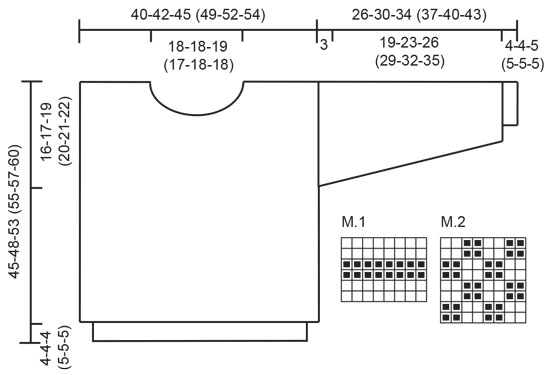 |
|||||||
Have you finished this pattern?Tag your pictures with #dropspattern or submit them to the #dropsfan gallery. Do you need help with this pattern?You'll find 19 tutorial videos, a Comments/Questions area and more by visiting the pattern on garnstudio.com. © 1982-2025 DROPS Design A/S. We reserve all rights. This document, including all its sub-sections, has copyrights. Read more about what you can do with our patterns at the bottom of each pattern on our site. |
|||||||












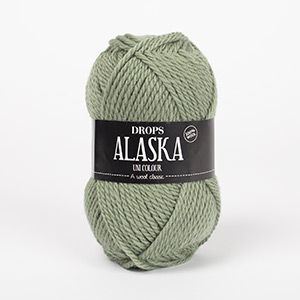
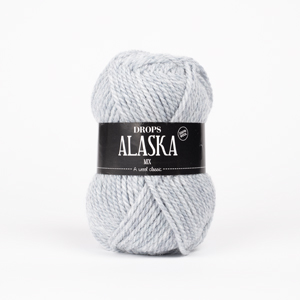



























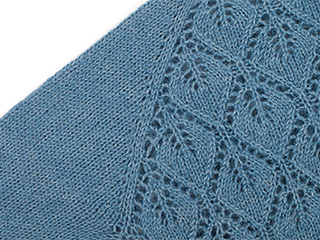


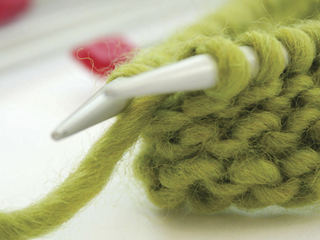








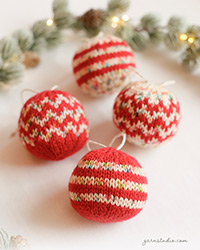
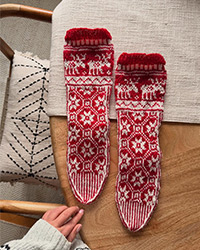


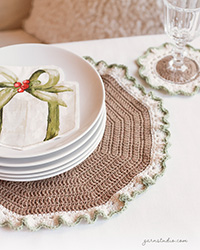
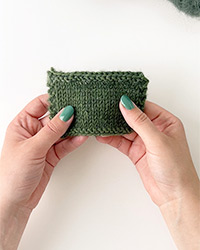
Post a comment to pattern DROPS Children 7-5
We would love to hear what you have to say about this pattern!
If you want to leave a question, please make sure you select the correct category in the form below, to speed up the answering process. Required fields are marked *.